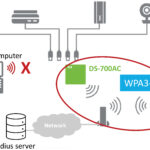Setting up your email account in applications like Outlook often involves automatic server configuration. However, there are times when you need to manually input your server settings, especially when dealing with Exchange servers. This guide will walk you through how to find your Exchange server settings and understand the essential email server settings you need. Whether you’re using Microsoft 365 or a direct Exchange server, understanding these settings is crucial for seamless email communication.
Locating Your Exchange Mailbox Server Settings
If you are connecting to an Exchange mailbox and are unsure about using Microsoft 365, or need to confirm your settings, follow these steps using Outlook Web App (OWA):
-
Access Outlook Web App: Open your web browser and navigate to the Outlook Web App login page. If you need assistance signing in, refer to official documentation on how to sign in to Outlook Web App.
-
Navigate to POP and IMAP Settings: Once logged in to Outlook Web App, locate the Settings icon (usually a gear icon) on the toolbar. Click on it, then select Mail, and finally choose POP and IMAP.
-
Retrieve Server Settings: On the POP and IMAP settings page, you will find the necessary server names and port numbers for POP3, IMAP4, and SMTP. Note down these details as they are your Exchange server settings required for manual configuration.
Understanding Essential Email Server Settings
To successfully configure your email client, you need specific information from your email provider. Below is a breakdown of the common email server settings you should be aware of, particularly when dealing with an Exchange server. You might need to set up your email as an IMAP or POP account depending on your needs. It’s advisable to consult with your provider if you’re uncertain which protocol to use.
Note: Using IMAP or POP accounts will only synchronize your emails to your device. Calendars and contacts associated with the account will typically remain stored locally on your computer unless configured otherwise through Exchange or Microsoft 365 services.
To simplify the process of gathering your email settings, use the following guide when contacting your email provider:
- Print this guide: Having a physical copy can be helpful during your call.
- Contact your provider: Reach out to your email provider and inquire about the settings listed in the chart below.
- Record Settings: Fill in the “Write Your Setting Here” column with the information provided by your email provider.
- Enter Settings: Return to your email application and input the collected information to finalize your email setup.
Note: You may not need all settings listed. Confirm with your provider which settings are necessary for accessing your email on your device.
General Email Settings
| Setting | Description | Write Your Setting Here | Example |
|---|---|---|---|
| Email Address | Your email address. | [email protected] | |
| Password | Your email account password. | ——– | |
| Display Name | Name recipients see. | Mike Rosoft | |
| Description | Account description (personal, work, etc.). | Personal, work, etc. |
Incoming Mail Server Settings
These settings are for receiving emails from your Exchange server or email provider’s server.
| Setting | Description | Write Your Setting Here | Example |
|---|---|---|---|
| Host Name | Incoming mail server name. | outlook.office365.com | |
| Username | Your email address. | [email protected] | |
| Port | Incoming mail server port number. | 143 or 993 (IMAP), 110 or 995 (POP) | |
| Server or Domain | Your email provider. | yourprovider.com, gmail.com | |
| SSL? | SSL encryption enabled? | SSL Enabled |
Outgoing Mail Server Settings (SMTP)
These settings are for sending emails via your Exchange server or email provider’s server.
| Setting | Description | Write Your Setting Here | Example |
|---|---|---|---|
| SMTP Host Name | Outgoing mail server name. | smtp.office365.com | |
| SMTP Username | Your email address. | [email protected] | |
| SMTP Password | Your email account password. | ——– | |
| SSL? | SSL encryption enabled? | SSL Enabled |
Troubleshooting Connection Issues
Encountering difficulties? Here’s how to get further assistance:
-
For general email providers (Gmail, Yahoo, etc.): The best approach is to directly contact their support for specific guidance on setting up your email account with their services. You can also consult their help documentation for server settings.
-
For Microsoft 365 or Exchange-based work/school accounts: Reach out to your Microsoft 365 administrator or your organization’s technical support team. They are equipped to provide tailored assistance for your Exchange server settings and resolve any account-specific issues. You can also check the server status of Outlook.com to ensure there are no service disruptions.
By understanding and correctly configuring your Server Exchange Server settings, you ensure reliable and secure email communication. This guide aims to simplify the process and provide you with the necessary information to manage your email accounts effectively.

